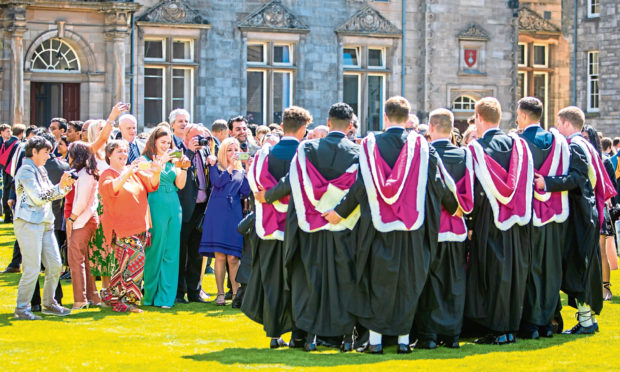In the chancellor’s largesse to industry, enterprise, the self-employed and many more – mostly deserving – causes, a significant grey area remains.
The impact on the student body of the coronavirus crisis measures has not been adequately addressed by government, either nationally or regionally.
As a group, they may be quite low down the pecking order when it comes to state handouts, being less productive commercially than, say, an airline or even a start-up still in the spare bedroom phase of innovation.
They may attract little public sympathy, as they are considered over-indulged already, although the vast bulk (all those outside Scotland) are paying for their education and often their living expenses, too, in the form of loans.
But the fact is that hundreds and thousands of undergraduates, and post-graduates, are now displaced, having more or less been ordered back to their home towns as their universities brought down the shutters.
It should be noted that many of these seats of higher learning were among the first institutions to close, before schools, theatres, concert halls and most of the high street.
And because their summer terms tend to involve no teaching, just exams and assessments, the pattern has been to shut for the remainder of the academic year – that is, until September or October.
It was probably a good idea for the young to be returned to the comfort and security of their parents, where possible. We are certainly glad to have ours back under one roof.
They continue to receive some input from their tutors, who are replying to emails about essays at least and who, no doubt, are working as best they can in the circumstances.
But there is no online teaching and any real university life – lectures, seminars, interaction (intellectual or otherwise) – ended in mid March.
In fact, wind that back a few weeks because the lecturers’ strike brought most classes to a halt at the half-term mark.
The cost of such disruption is unquantifiable in emotional terms, though youngsters are resilient and those privileged enough to attend university have less to complain about than millions their age in impoverished nations.
The cost financially is more straightforward, however. In answer to a query about tuition fees on one daughter’s university website, the reply was “we are unable to offer refunds”.
At £9,000 a year, to be repaid once they start working, that is a big forfeit and there will be a reckoning for universities in the future, as they answer perhaps to collective action by students to recoup their wasted fees.
Of more immediate concern are the rents being demanded for the now empty accommodation blocks. Here, it seems universities have been reasonable landlords, releasing those in halls of residence from term-three contracts.
But in the private sector, students – or more likely, their parents – are at the mercy of the landlord’s generosity, or lack thereof.
In all the recent upheaval, this was not something I’d given much thought to, until last week when one daughter began to get urgent reminders for the final four months on the London flat she had had to abandon along with her course.
Outraged by his tone, if not altogether surprised by his claim, I searched for guidelines but there appeared to be none and why would there be? The situation is unprecedented.
A neighbour of ours who lets a house near Stirling University told me she had given her students a 50% reduction that month, and felt guilty because they asked before she offered it.
My daughter’s landlord put up more of a fight. In the end, we (and her flatmates) coaxed a 15% discount on a typically exorbitant (and ill equipped, but that’s another matter) London pad.
We haven’t broached the subject yet with the other daughter’s landlord but in these uncertain times find ourselves forking out for two uninhabited flats in one of Europe’s most expensive capitals.
It is not just London where students have fallen through the compensation safety net. In Northern Ireland, a student accommodation provider made the point that “our properties remain open and our residents remain enrolled with their university”, the Belfast Telegraph reported.
This landlord compromised by charging until the beginning of May rather than for the whole of the summer term (as ours have), if the students agreed to move out.
Another student in Ulster, no longer in his flat, said he received a threatening letter from his rental company warning further action could be taken if he did not maintain payments.
Students now living back home don’t fall into the category of evicted tenants, who are entitled to some government protection during the pandemic.
Through no fault of their own, they are absent tenants and while their dreams of further education may be in tatters, the bills just keep piling up.










